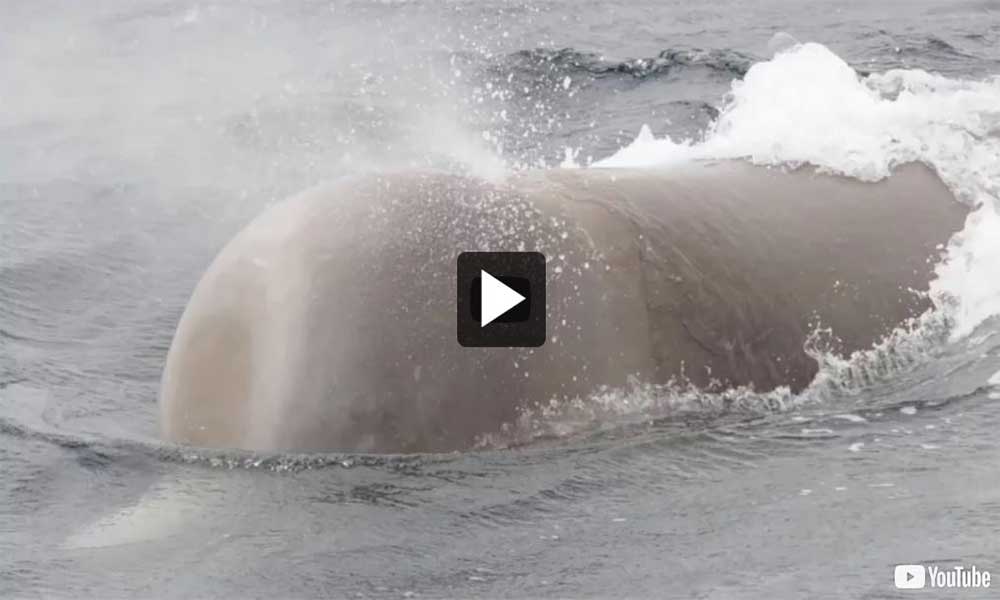Cetacean species and conservation
Cetacea is the scientific term for the group of marine mammals that includes whales, dolphins and porpoises. There are over 90 species of cetaceans that inhabit the world's oceans, lakes and rivers according to the World Cetacean Database (2016).
Cetaceans have bodies adapted to spend their entire lives in water. They are long and streamlined with no hind legs, paddle-like pectoral flippers and horizontal tail flukes to propel them powerfully through the water. They breathe through one or two blowholes, situated on the top of the head. Underneath their skin is a fat layer called blubber, that keeps them warm in chilly waters.
One of the most remarkable features of cetaceans is how they are equipped to eat. All whales, dolphins and porpoises can be divided into two sub-orders:
Toothed whales (odontocetes)
Toothed whales have teeth and eat mainly fish and squid. Toothed whales include the sperm whale, beaked whales and all dolphins and porpoises.
The following species are some of the toothed whales species known to inhabit Canadian waters:
- killer whale (orca)
- killer whale (Northeast Pacific northern resident population)
- killer whale - Northeast Pacific (offshore)
- killer whale (Northeast Pacific, southern resident population)
- Northeast Pacific transient killer whale population (or Bigg’s killer whale)
- killer whale (Northwest Atlantic / Eastern Arctic population)
- northern bottlenose whale (Scotian Shelf)
- Dall’s porpoise
- harbour porpoise
- Pacific white-sided dolphin
- Sperm whale
- Sowerby’s beaked whale
- beluga whale
- narwhals
Baleen whales (mysticetes)
Baleen whales have no teeth. Instead, their mouths act like giant strainers with hundreds of long, stiff strips of baleen hanging down from their upper jaws. Baleen is made of a substance similar to human fingernails. These baleen plates or strips overlap and their edges are lined with bristles like a fuzzy brush.
Almost all of the largest cetaceans are baleen whales, yet most of them eat small fish and tiny shrimp-like animals known as krill, which gather in huge swarms below the water surface. There are also three types, or families, of baleen whale:
- Balaenidae
- Balaenopteridae, also known as rorquals
- Eschrichtiidae
The following are some of the species of baleen whales known to inhabit Canadian waters:
- minke whale
- gray whale
- humpback whale
- sei whale
- right whale
- fin whale
- bowhead whale
- blue whale
Conservation
Whales are international symbols for wildlife conservation. Where whalers once hunted with harpoons, whale watchers now hunt with cameras. Whale watching has become a multimillion-dollar tourism industry in Canada, attracting thousands of visitors each year.
Canada stopped all commercial whaling in 1972 as a conservation measure, at the time, large whales were threatened almost everywhere in the world. In 1982, the International Whaling Commission (IWC) declared a worldwide ban, or moratorium, on all commercial whaling.
Whales face serious conservation challenges, with many species considered at-risk. While no whale has become extinct in modern times, some, such as the Pacific gray whale, came very close. Even still, the future of the North Atlantic right whale is uncertain.
A healthy future for whales is still not a sure thing. As human populations grow, so do the pressures we place on the oceans and the animals that live in them. Some of the key human factors affecting whales are:
- chemical and noise pollution of the water
- entanglement and accidental capture in fishing gear
- being hit by ships
- human disruption during necessary activities like feeding, nursing and resting
It is hard to know to what degree human activities affect whales. To provide the best protection for whales we need to continue to learn everything we can about them. Fortunately, it is not necessary to kill or capture whales in order to study them. In the last 25 years, scientists have developed special photo identification, acoustic, tagging, and tracking techniques to learn about the everyday lives of whales.
- Date modified:
